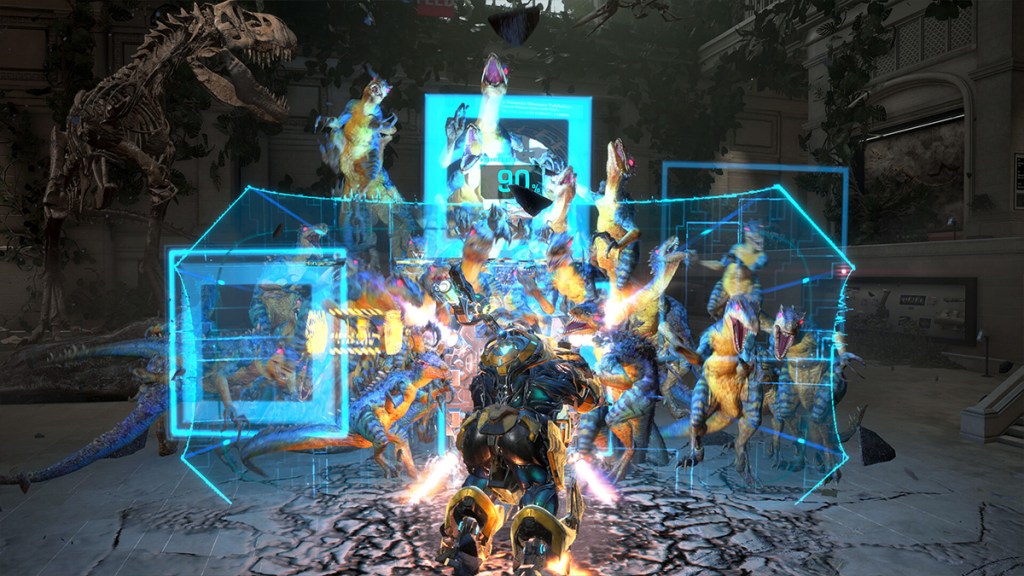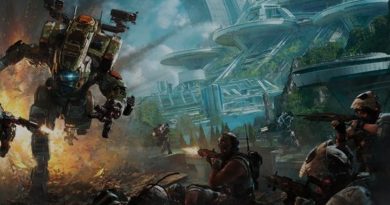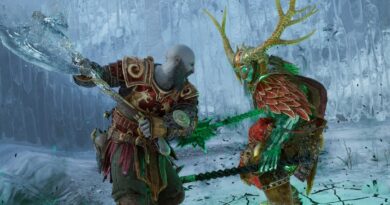Exoprimal Preview: Left 4 Dino
Capcom has been mining its back catalog with various collections, remakes, and new entries in long-running franchises. Dino Crisis has, much to the chagrin of a niche in its fanbase, not been included in this IP excavation and has stayed extinct since its odd third entry. Exoprimal is not a fourth Dino Crisis and isn’t trying to be, and while that is a little disappointing, it still seems like a decent cooperative shooter that’s absolutely loaded with dinosaurs.
Exoprimal is mostly built around dropping two teams into a level and blasting the scores and scores of dinos that pour out of the sky, as if monsoon season were replaced by velociraptor season. But it’s not always velociraptors and that’s what Capcom wants to highlight for this bizarre shooter. Players get funneled along a course where missions play randomly, some force users to shoot certain kinds of dinosaurs, while others have the team protecting a certain point. It’s a different collection every time that’s supposed to give the game a healthy amount of replayability.

The variability is welcome since the core act of slaughtering dinosaurs is relatively mindless, and that kind of gameplay is more prone to getting repetitive. The shooting is snappy enough and every character has a slew of unique abilities, but dealing with the perpetual onslaught is a constant, as there seemingly aren’t other types of mechanics to mix it up. It’s going to be the game’s biggest hurdle, and it’s difficult to fully judge after only a few hours. However, it’s something Capcom is aware of, according to technical director Kazuki Abe.
“With every different experience it brings that challenge, but also that excitement of figuring out how do you, as a team, overcome these various challenges?” said Abe. “In this round it may seem simple, the next round might not be so simple. And that constant changing of missions and enemies is part of what we hope will keep Exoprimal enjoyable to players for a long time.”
There are multiple mission types, a competitive component that pits two human teams against each other at the end, and an array of customization options, all of which add replayability but don’t automatically make the game endlessly replayable. Players are still doing similar actions for the most part — destroying dinosaurs on admittedly generic maps — and it’s unknown how long it will keep the experience fresh. Capcom promised that more game types would unlock in the full game, and some thankfully did during the multi-hour session, but cutting down gangs of dinosaurs began to lose some of its luster the course of the demo, even if some of those beasts pouring out of the portals were different.
Capcom is supporting the game after launch, which will depend on player feedback pulled from social media and the gameplay data that gets pinged back to Capcom. Seeing where players die and what game types need work are some just of the areas Capcom is going to look into, and hopefully quick action can further streamline the experience and ensure that it stays relevant. Launching on Game Pass and having cross-platform play with the PlayStation consoles and PC were also two aspects Abe cited as key to keeping the game alive and are appreciated since games like this need all the help they can get.

The exosuits are also another part of the game that’s geared towards replayability since there’s a decent number of them and all of them can be customized. They’re separated into three classes — assault, tank, and support — and bring either firepower, defense, or healing to the team, but all in their own unique ways. And not only is there a decent amount of them, players can swap freely at any time, which offers a great amount of flexibility for those who need to change their strategy on the fly. Sometimes a team might not need Roadblock’s giant shield, but Skywave’s healing blasts.
Exosuits can also be further customized in a way that lets players bend classes. For example, any character can attack using a huge cannon or lay down a healing field, meaning a healer can have a big-ass cannon or a tank can patch up the team. There are even cosmetics that give players more superficial ways to trick out their armor. Director Takuro Hiraoka said that the team made all these exosuits by mixing together what the game needed to suit its mechanics and what types of aesthetics the team wanted. Art director Takuro Fuse went one step further and explained how important it is to make different characters that stick out during intense sequences.
“There’s the mecha component to them, and these characters do look very robotic,” said Fuse. “But at the same time, we wanted to make it a point to infuse character and personality into each one. So it’s the combination of that aesthetic of the mech, but also with its own unique personality and flair when it’s on the battlefield: the heroic type, the tough type, someone who looks like a pro wrestler, and then the sleek, nicely framed characters and whatnot.
“But again, these are not humans — they are mechas — so finding that balance between that personality and that aesthetic was very important. And then there was some inspiration that came from Japanese culture and anime as well. All of these things really came together in this beautiful blend of what we see in the world of Exoprimal.”

Exoprimal has solid core mechanics, a silly premise, and multiple exosuits that yield variety and different playstyles. These aspects mean that it has hooks in place that give it the potential to become a relatively solid cooperative shooter, which is something Capcom doesn’t currently have. The question just remains how long it can maintain that momentum and whether or not it’ll go extinct shortly after launch.





